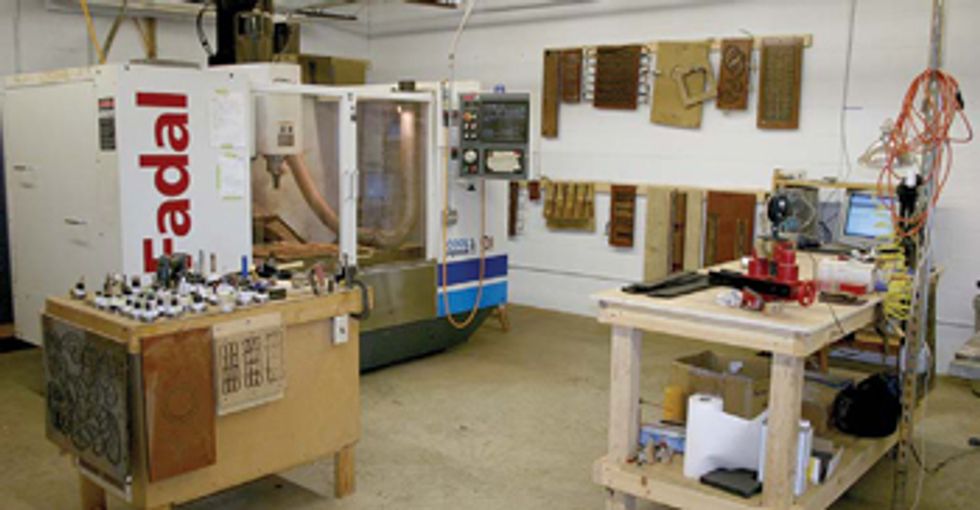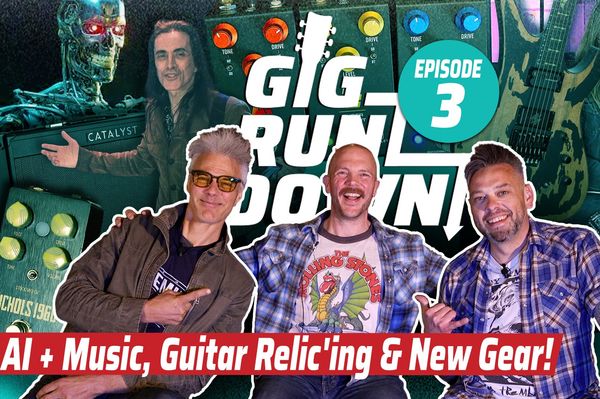I have touched on the many challenges we and most other builders face every day, so when you’re at your job thinking, “I’d give anything to be making guitars all day long,” you will know that though it has its moments, it also has its moments—if you know what I mean.

Our repaired and restored CNC humming along in its new home.
Over the years, what I’ve tried to do in my PG column is describe the guitar manufacturing process, rather than simply offer another comparison between mahogany and rosewood. As a reader, I think I’d find this more interesting. I have touched on the many challenges we and most other builders face every day, so when you’re at your job thinking, “I’d give anything to be making guitars all day long,” you will know that though it has its moments, it also has its moments—if you know what I mean.
One of the worst days I ever had at this job was August 10, 2011. It began as most do— checking my schedule to see what parts needed to be run that day on our CNC (computer numerically controlled) machine. The CNC is basically a huge, computer-controlled router. It saves tons of time, tedious labor, and wood while making perfect parts every time. This allows us to spend our time building the bodies and doing the final shaping of the necks, as well as finish work and setups. It has been an invaluable piece of equipment, making our guitars much better, and dramatically increasing our efficiency.
On this day, I checked my schedule and saw that I needed to make fretboards. I powered up the machine, fixed the jig to the table, and loaded the ebony blanks to make four fretboards. Then, as usual, I went back inside the main building to set up some guitars. Because of its size, the CNC was located in a metal building behind our main shop, though it was in our plans to move it to the nice and spacious building next door that we bought in 2008. This would give us much more room and allow us to move the rest of the milling-room equipment into the CNC space, getting all the part-making into one place. But due to the recession and the amount of time it would take to move it, we just couldn’t afford for the machine to be down. On the fateful day, just 15 minutes after starting the machine, I noticed a passerby staring into the CNC building and looking back into the office.
When he got to the door, he uttered the most dreaded word: “Fire!” I ran out to the CNC room and found the machine engulfed in flames with the room starting to catch. Grabing a fire extinguisher from the wall and giving a blast, the entire fire went out to my amazement. But it came right back when oil from the machine mixed with the sawdust. By then, a couple of employees showed up with more extinguishers and we got the fire out completely. When the fire company arrived, they said we were only minutes away from losing the whole building. I was both grateful and very saddened by what had just happened. We didn’t lose any guitars—the building was far enough away from the main shop—and the CNC room was saved as well. The machine itself, however, was burned pretty badly, right in the technical heart of the thing.
I knew right away it was my fault, and that was the worst part. I had loaded the tools incorrectly and when the machine made a tool change, it grabbed one with a holder that was too long for that job. This caused the tool to run down into an epoxy jig and set it afire. I felt like I had let everyone down and risked all of our jobs.
The moping process began. After two days of that, we sat down to figure out how to get along without this most valuable tool, and how to get it repaired and running again. We did have insurance, so we knew that all would be okay. It was at this point that we started to think about not only getting back to where we were before the fire, but also improving the shop in the process (aka lemons to lemonade). We decided this was finally the time to move the machine to our “new” facility next door. Recession be damned! After all, we already owned that building, and faced no real risk by moving into it.
My friend and folk musician Robin Williams likes to say, “To make a long story interesting … ” In that light, all could not have worked out better. And as I type this, the machine is humming away in its new, spacious, and better-lit home while working on the very fretboards it was making when it burst into flames. Many thanks to the folks who passed along their well-wishes during that stressful time and to the folks at Pinnacle CNC who did a great job of getting us back up and running. Sometimes, good things can happen when we are able to rid ourselves from the “woe-is-me” attitude and move on from adversity.
Mark Dalton
Mark Dalton is a founding partner of Huss & Dalton Guitar Company. When not building guitars, Mark and his wife, Kimberly, tend to the draft horses and mules that inhabit their farm in the Piedmont region of Virginia.


